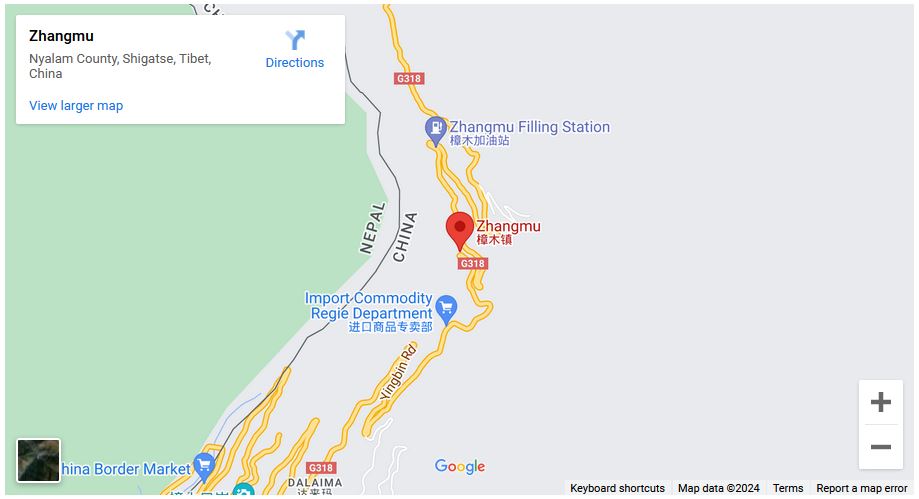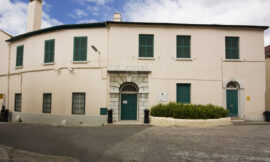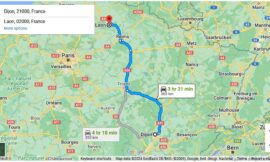Note: There doesn’t appear to be a border crossing from Nepal to Tibet via Kathmandu to Zhangmu in Google Maps, but was the route taken in 2004.
The journey from Kathmandu to Zhangmu unfolds as a fascinating cross-border adventure, taking travelers from the vibrant capital of Nepal to the border town of Zhangmu in Tibet, China. This route, traversing diverse landscapes and cultural transitions, offers a unique perspective on the Himalayan region and serves as a gateway to the mystical landscapes of Tibet.
Kathmandu, the bustling capital of Nepal, sets the stage for this trans-Himalayan journey. Nestled in the Kathmandu Valley, the city is a vibrant hub of culture, history, and spirituality. Travelers often explore Kathmandu’s ancient temples, vibrant markets, and the medieval architecture of Durbar Square before embarking on their cross-border expedition.
The initial leg of the journey involves leaving Kathmandu and navigating through the scenic Prithvi Highway, which winds its way through terraced fields, hills, and picturesque villages. As the road gradually gains altitude, travelers are treated to panoramic views of the surrounding hills and the ever-present Himalayan peaks in the distance.
The road to Zhangmu takes travelers along the Friendship Highway, a vital route that connects Nepal and Tibet. The landscapes evolve from the lush greenery of the lower elevations to the arid and rugged terrains characteristic of the Tibetan Plateau. The Friendship Bridge, spanning the Bhote Koshi River, marks the border crossing between Nepal and China. Here, travelers undergo immigration procedures and transition from the Nepalese side of the border to the Chinese side.
Upon entering Tibet, the cultural and geographical shift becomes pronounced. The landscapes transform into expansive plateaus framed by towering mountain ranges. The road ascends, presenting travelers with stunning vistas of snow-capped peaks and vast Tibetan plateaus dotted with nomadic settlements.
Zhangmu, perched at an elevation of approximately 2,300 meters, is the first town on the Tibetan side of the border. Nestled on the cliffs overlooking deep gorges, Zhangmu is known for its distinctive location and serves as a crucial trade and transit point. The town’s architecture reflects Tibetan influences, with white-washed buildings adorned with colorful prayer flags.
One of the remarkable features of Zhangmu is its lush vegetation, a stark contrast to the arid landscapes of the Tibetan Plateau. The town benefits from the monsoon rains, creating a rare and verdant oasis in this high-altitude region. The surrounding hills are covered with rhododendron forests, adding a touch of vibrant color to the landscape.
The journey from Kathmandu to Zhangmu is not just a physical traverse but a cultural and environmental transition. Travelers witness the changes in architecture, lifestyle, and scenery as they cross the border into Tibet. The region’s significance is not only geographical but also historical and spiritual, with Tibet being a repository of Tibetan Buddhism and ancient cultural traditions.
The road journey offers a glimpse into the challenges of infrastructure development at high altitudes, the cooperation between neighboring countries, and the resilience of communities along the trans-Himalayan route.
In conclusion, the journey from Kathmandu to Zhangmu encapsulates the essence of trans-Himalayan travel, combining the rich cultural heritage of Nepal with the rugged landscapes and spiritual traditions of Tibet. The route unfolds as a tapestry of diversity, providing travelers with a unique opportunity to experience the varied facets of this enchanting region. The transition from Kathmandu’s vibrant chaos to Zhangmu’s serene cliffs symbolizes the interconnectedness of cultures and the allure of the Himalayan frontier.


